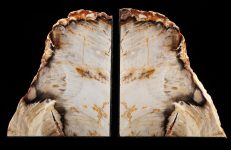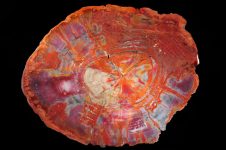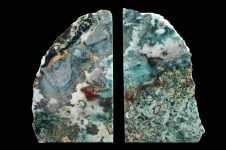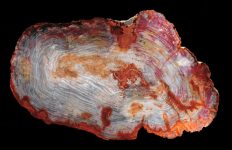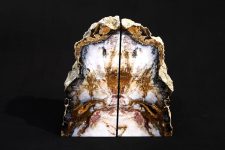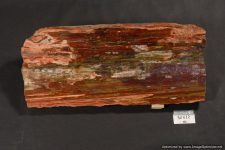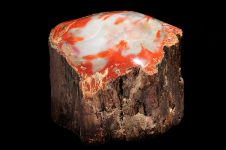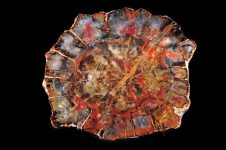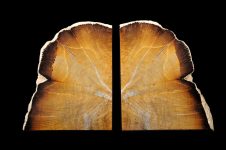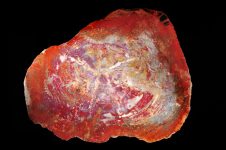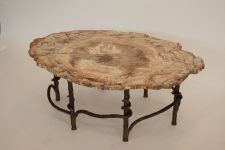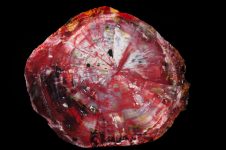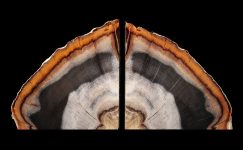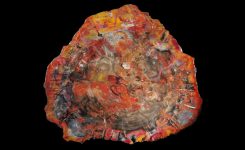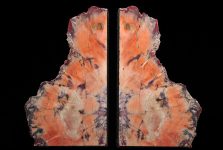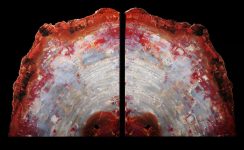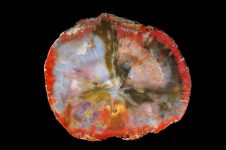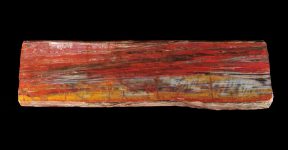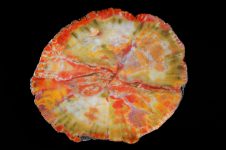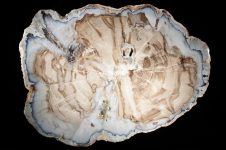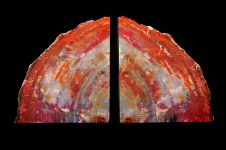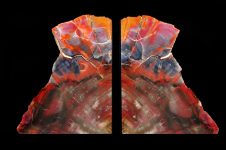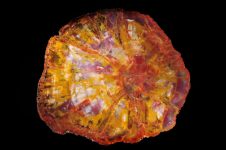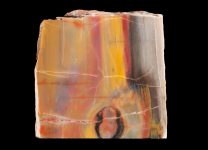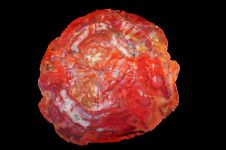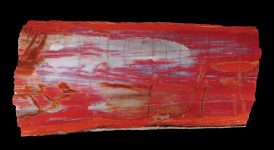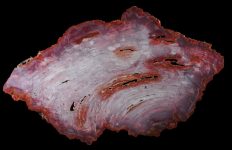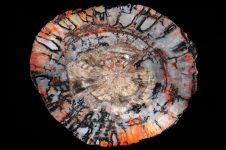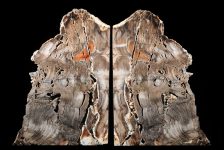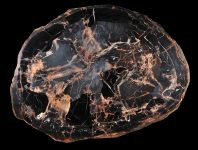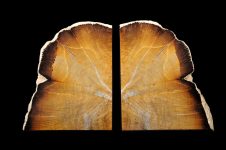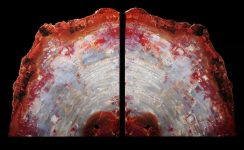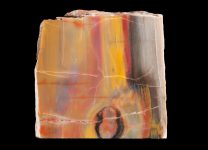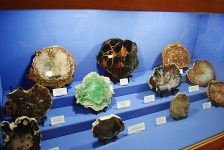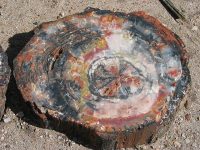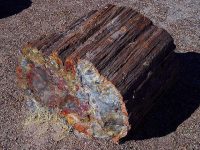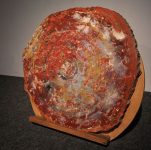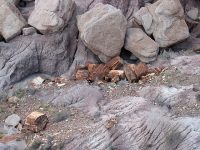PETRIFIED WOOD
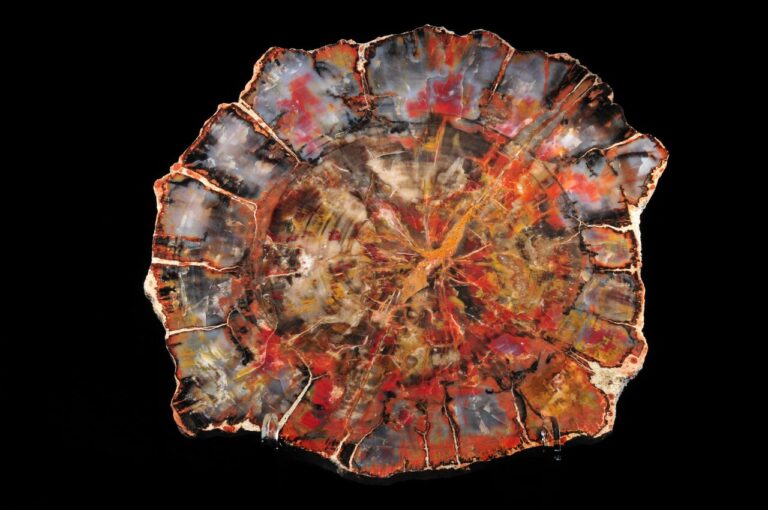
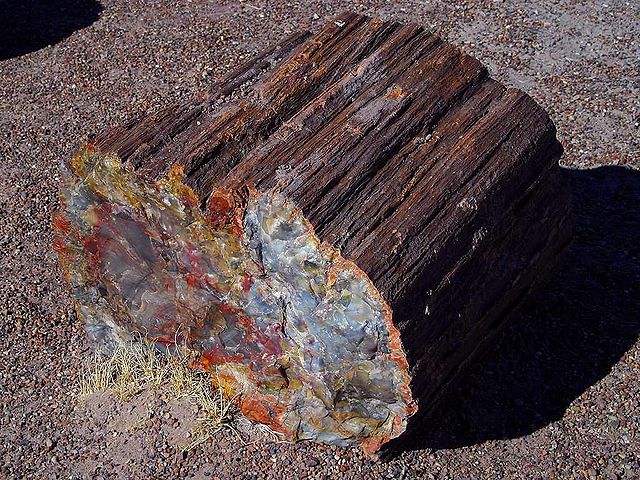
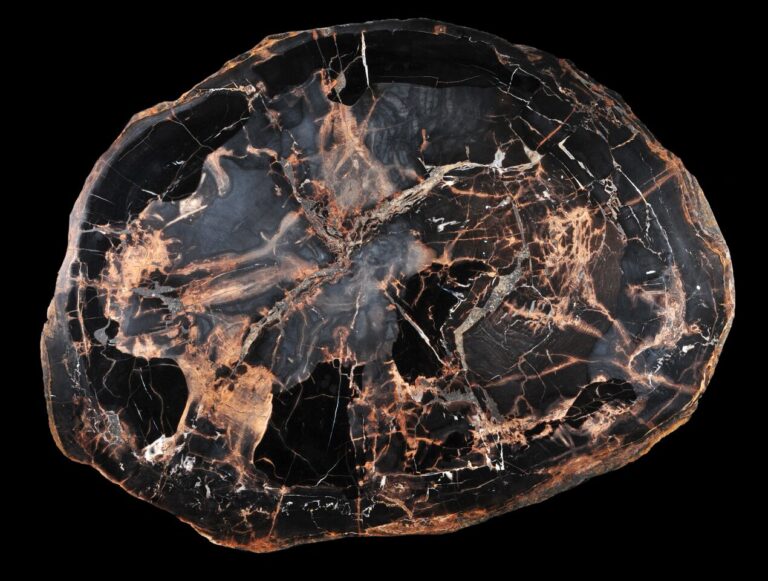
PETRIFIED WOOD
Petrified wood is a fascinating geological phenomenon and a testament to the ancient history of Earth’s forests. Formed over millions of years through a process known as permineralization, petrified wood represents a unique form of fossilization where organic material is replaced by minerals, preserving the intricate cellular structure and organic composition of ancient trees. In this exploration, we delve into the formation, characteristics, locations, uses, and scientific significance of petrified wood.
Formation Process
Petrified wood forms when fallen or buried trees are rapidly buried by sediment, such as volcanic ash or river sediments, in an oxygen-deprived environment. Over time, groundwater rich in dissolved minerals, such as silica (commonly from quartz), calcite, and pyrite, seeps into the porous wood tissue. Through a process called permineralization, these minerals precipitate and replace the organic tissues of the wood cell by cell, preserving the structure and texture of the original tree. The gradual replacement of organic matter with minerals results in a stone-like fossil that retains the external shape and sometimes even the cellular details of the original wood.
Characteristics of Petrified Wood
Petrified wood exhibits a range of colors, textures, and patterns depending on the minerals present during the fossilization process. Common colors include shades of red, yellow, orange, brown, and gray, often reflecting the minerals that replaced the organic material. The exterior of petrified wood often retains the bark texture, while the interior may reveal intricate patterns of growth rings, knots, and even the cellular structure of the original tree. The hardness of petrified wood, typically measuring 6 to 7 on the Mohs scale, makes it suitable for cutting, polishing, and use in decorative and artistic applications.
Locations and Geological Context
Petrified wood is found in various regions around the world, typically in sedimentary rock formations and ancient riverbeds where trees were buried and fossilized millions of years ago. Significant deposits of petrified wood are notably found in the Petrified Forest National Park in Arizona, USA, where extensive forests existed during the late Triassic period, approximately 225 million years ago. Other notable locations include Madagascar, Argentina, Australia, and Indonesia, each offering unique specimens of petrified wood with distinct colors and geological histories.
Uses and Applications
Petrified wood has been prized for its beauty and durability since ancient times and has been used for a variety of practical and artistic purposes:
Decorative Objects: Polished slabs and cross-sections of petrified wood are widely used as decorative objects, showcasing the natural colors and patterns of fossilized trees. These specimens are often displayed in museums, private collections, and as focal points in interior design.
Jewelry and Ornaments: Petrified wood is occasionally cut and polished into cabochons or beads for use in jewelry-making. The unique colors and textures make each piece of petrified wood jewelry a distinctive work of natural art.
Building Materials: In some regions, petrified wood has been used as a building material for constructing walls, floors, and countertops due to its hardness and aesthetic appeal.
Scientific Research: Petrified wood provides valuable insights into ancient climates, environments, and vegetation patterns. By studying growth rings and isotopic compositions preserved in petrified wood, researchers can reconstruct past climates and ecological changes with high precision.
Scientific Significance
From a scientific perspective, petrified wood offers a wealth of information about ancient forests, plant evolution, and geological processes:
Paleobotany: Petrified wood preserves detailed anatomical features of ancient trees, such as growth rings, leaf scars, and vascular tissues. These features provide clues about the growth rates, life spans, and ecological interactions of prehistoric plants.
Paleoclimatology: The isotopic composition of petrified wood can be analyzed to reconstruct past climates and environmental conditions. Variations in oxygen and carbon isotopes preserved in growth rings reveal fluctuations in temperature, precipitation, and atmospheric conditions over geological time scales.
Stratigraphy: Petrified wood serves as an important marker in geological stratigraphy, helping to correlate rock layers and date sedimentary sequences. By identifying and studying fossilized trees within rock formations, geologists can refine geological maps and reconstruct the history of ancient landscapes.
Cultural and Historical Significance
Throughout history, petrified wood has captivated human imagination and cultural narratives. In various cultures, petrified wood has been associated with myths, legends, and spiritual beliefs, symbolizing endurance, transformation, and the passage of time. Ancient civilizations often revered petrified wood as sacred objects or used them in ceremonial rituals, attributing mystical properties to these stone-like fossils.
Conservation and Preservation
Due to its geological and cultural significance, petrified wood is protected in many national parks, reserves, and geological sites around the world. Conservation efforts focus on preserving these natural treasures for scientific research, educational purposes, and public appreciation, ensuring that future generations can continue to study and admire the beauty and historical value of petrified wood.
